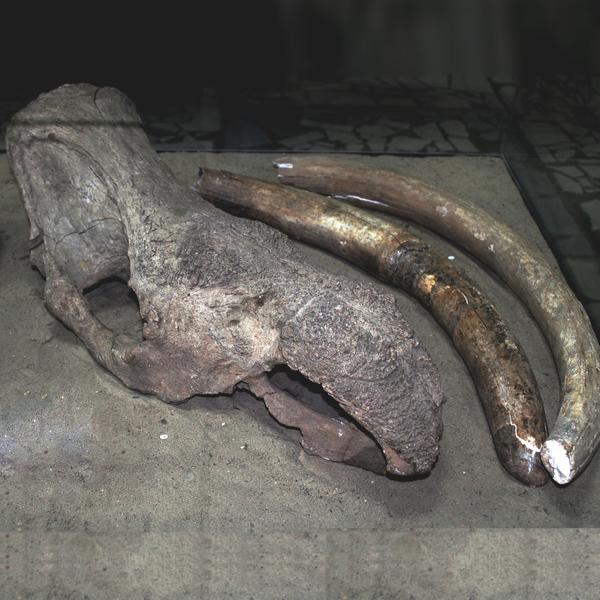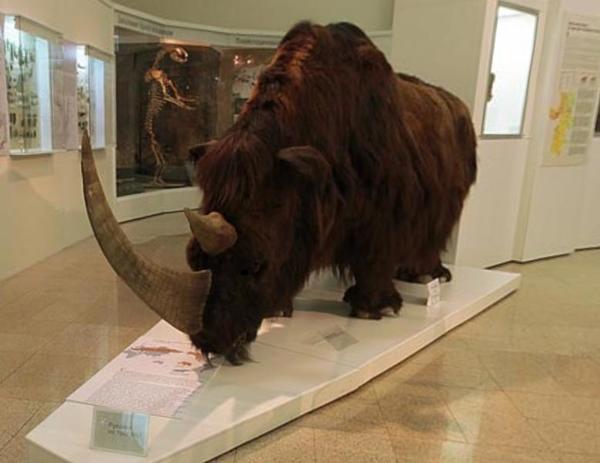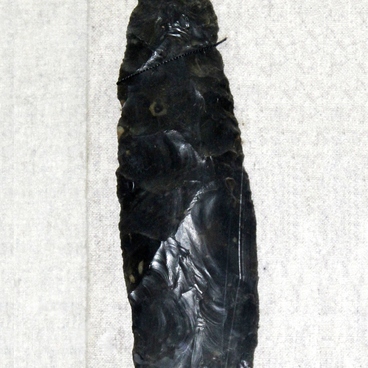The Skull of a Wooly Rhinoceros was found in 1966 in a sand pit of the cement plant near the city of Fokino, the Bryansk Region. The lower jawbone has not survived. In the place where two horns used to be attached to the bone, there exists visible scaliness. The horns have not survived to this day: they consisted of keratin and their structure resembled tightly pressed wool. Such substance could have survived only under permafrost conditions.
#5
The Skull of a Wooly Rhinoceros
#7
The length of the Skull of a Wooly Rhinoceros kept in the ‘Bryansk Antiquities’ is 85 centimeters, the height, 25 centimeters. Judging by bone dimensions, scientists concluded that wooly rhinoceroses were the second largest animals after mammoths: their body length was around 3 meters, shoulder height, up to 160-170cm; they weighed about 3 tons. Wooly rhinoceroses had two horns of different length on their noses. The larger horn could be up to 130 cm, while the smaller one, up to 50 cm.
#8
Home for wooly rhinoceroses was tundra grasslands of Eurasia, in the territory of modern Russia, Mongolia and China. The animals fed mostly on grass and shrub shoots, sometimes on tree bark and branches. Having studied the teeth of the found skulls, scientists identified that wooly rhinoceroses used to live 40-45 years on the average.
#9
Reconstruction of wooly rhinocerose in State historical Museum of southern Urals
#10
Wooly rhinoceroses were not social animals. They preferred to live singly, trying to keep closer to water bodies: there were more plants at the waterside. Animal bodies were covered with long hair with thick-set underfur that protected them from cold and wind.
#11
Skulls of wooly rhinoceroses were stronger and more massive than the other bones. When rhinoceroses fought with each other, they were hit mostly on the head, and the skull protected it safely.
Bones of wooly rhinoceroses were found not only near Fokino, but also in the vicinity of other towns in the Bryansk Region. Ancient animals used to live here around 25-35 thousand years ago.
#12
After the Ice Age, climate became warmer and more humid. The snow cover grew higher, shrubs were replaced by forests. Wooly rhinoceroses could not adapt themselves to new conditions and gradually became to die out. Wooly rhinoceroses became completely extinct about 14 thousand years ago. Their last inhabitation was the north-eastern part of Siberia.
#13
State budgetary cultural institution Bryansk State Regional Ethnography Museum
читать дальшескрыть
00:00
00:00
1x
The Skull of a Wooly Rhinoceros
Размер
15x25x80 cm
15х25х80 cm
15х25х80 cm
Коллекция
Выставка
2
Открыть в приложении
Поделиться




